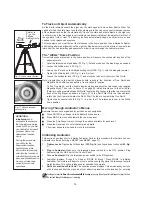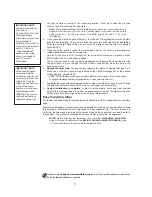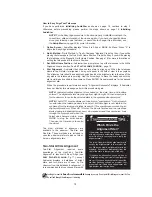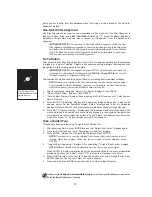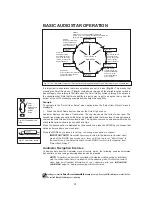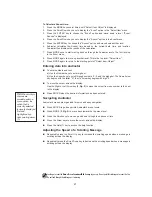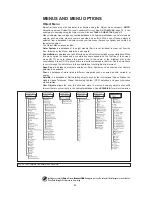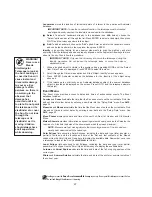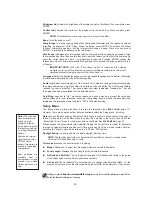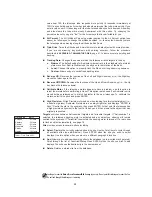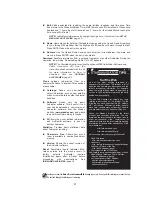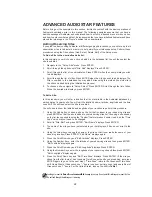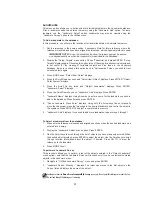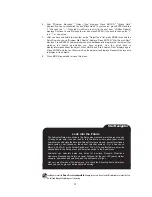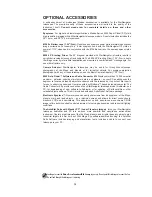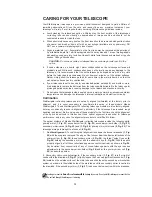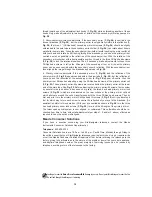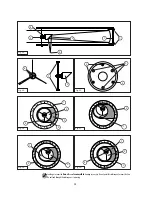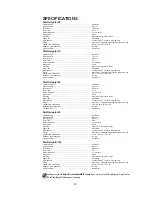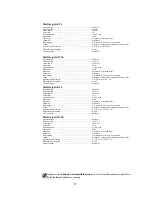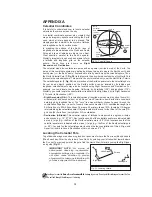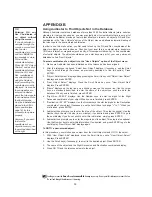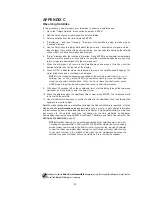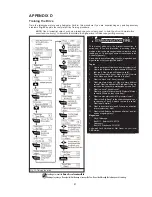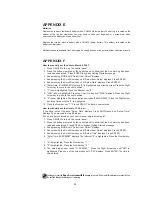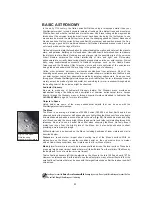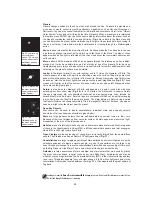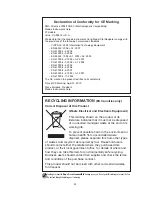
30
Looking at or near the
Sun
will cause
irreversible
damage to your eye. Do not point this telescope at or near the Sun.
Do not look through the telescope as it is moving.
3.
Press MODE to pause the Survey. Press ENTER to restart the survey at the first object of
the survey.
To check on the available amount of memory in Audiostar.
Audiostar has a limited amount of memory. Once you begin to store Landmarks, User Objects
and other bits of information in Audiostar, you will begin to use up memory. This procedure
allows you to check on how much memory is still available.
1.
Navigate to the "Setup: Statistics" menu option and press ENTER.
2.
"Statistics: 97.6K Char. Free" displays. This is the amount of memory that is still available
to the user.
Identify
This procedure allows you to use Audiostar to identify objects you have found in the night sky
using the Arrow keys. If the object is not in Audiostar's database, Audiostar displays information
about an object in its database that is closest to the one you queried about.
IMPORTANT NOTE: For this function to operate properly, you must first set the
telescope in the home position and initialize Audiostar. If you physically move the
telescope after initialization, this function will fail to operate properly.
In this procedure, you will centre an object you wish to have identified by Audiostar in the
telescope eyepiece and use the "Identify" menu to find out information about the object or the
nearest object to it in the Audiostar database.
1.
Centre the object you wish to have identified in the telescope's eyepiece.
2.
Navigate to the "Object: Identify" option and press ENTER.
3.
"Searching..." displays. When Audiostar finishes calculating, the name of the closest object
displays.
4.
Press a Scroll key to display information about this object. Audiostar displays some or all
the following information about the object with each press of a Scroll key:
Displayed information:
Example:
Catalog or common name of object
Messier 107, NGC6171, Orion Nebula, etc
Type of object
Globular Cluster, Nebula, Black Hole, etc.
Right Ascension
16:32:4
Declination
13°03'
Constellation Virgo,
Orion,
etc.
Magnitude
3
Size
2'
Scrolling message
"This Globular Cluster is 10,000 light years
away...."
Browse
This menu allows you to search the database for objects with certain parametres, much like a
search engine. "Edit Parameters" lets you set various parametres for the search, and "Start
Search" activates the search. A typical search might be performed as follows:
1.
Select "Browse" from the Object menu. Press ENTER. "Browse: Start Search" displays.
2.
Press one of the Scroll Keys and "Browse: Edit Parameters" displays. Press ENTER.
3.
"Edit Parameters: Largest (mins)" displays. "Mins" stands for arc-minutes. Press ENTER.
4.
"Largest (mins)" and a value displays. Using the Number keys, enter a size in arc-minutes.
Audiostar will search for objects
up to this size and no larger. Press ENTER.
5. "Edit Parameters: Largest (mins)" displays again. Press the Scroll Down key. "Edit
Parameters: Smallest (mins)" displays. Enter the value for the smallest size of an object that
Audiostar will search for in the database. Continue with "Brightest," Faintest," and
"Minimum Elevation," using the procedure described in steps 3 and 4.

